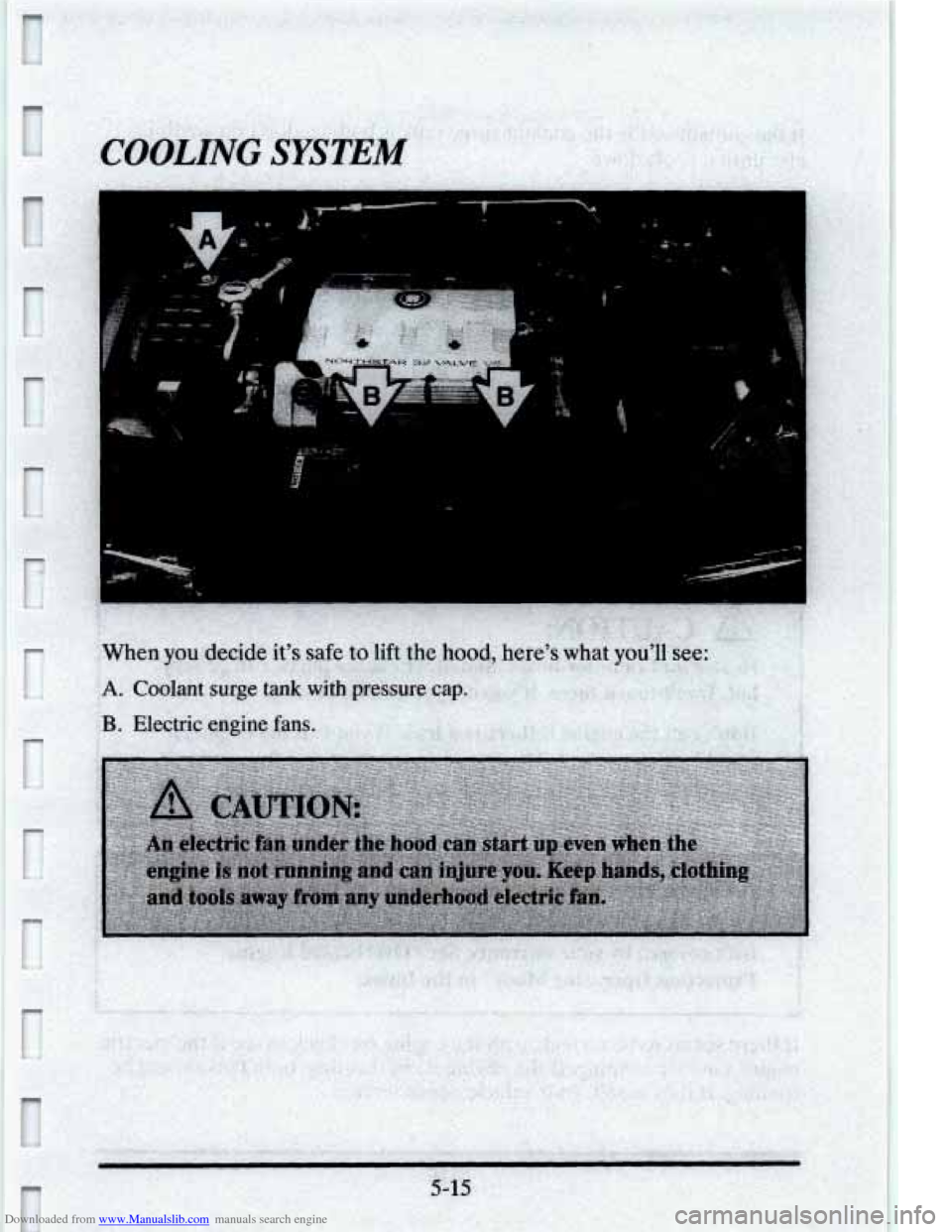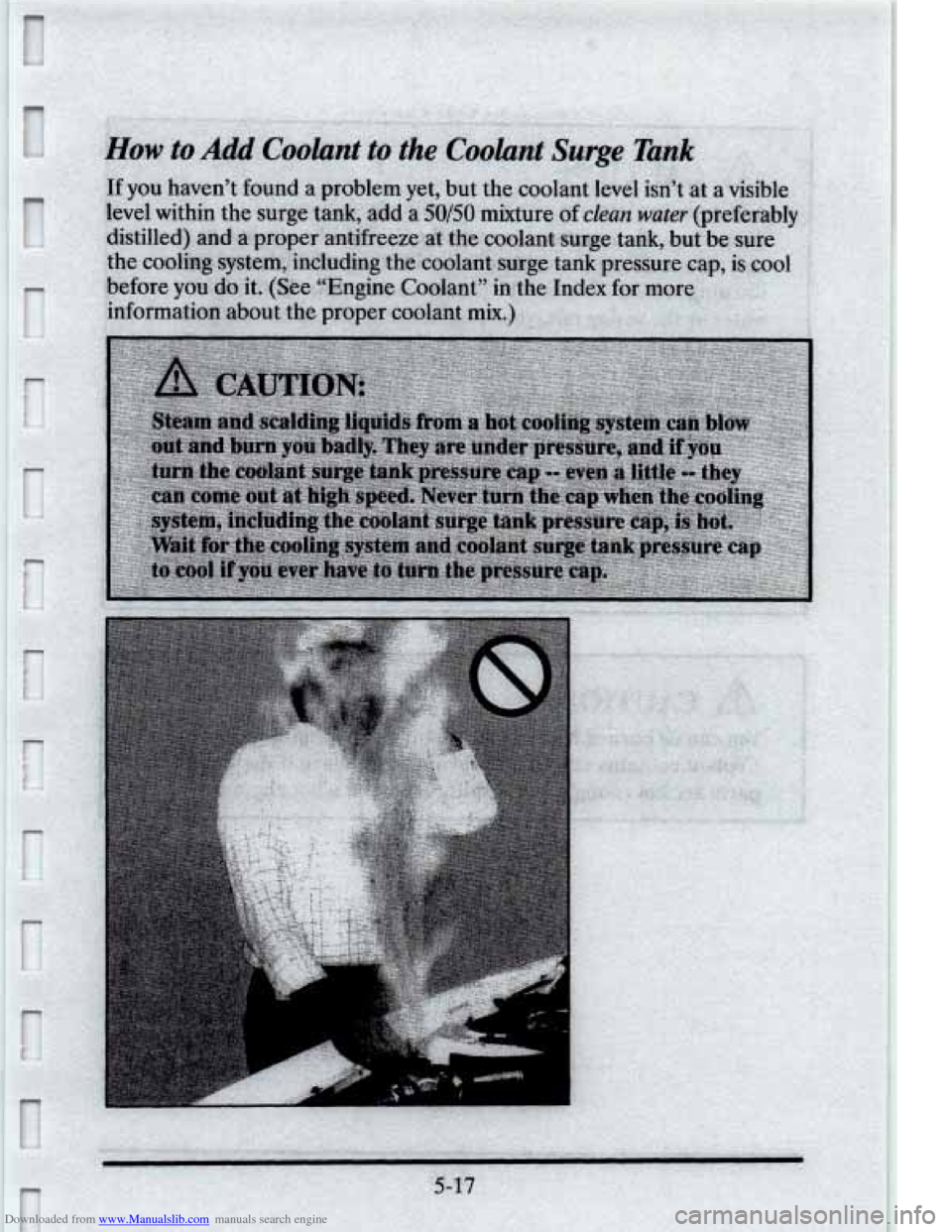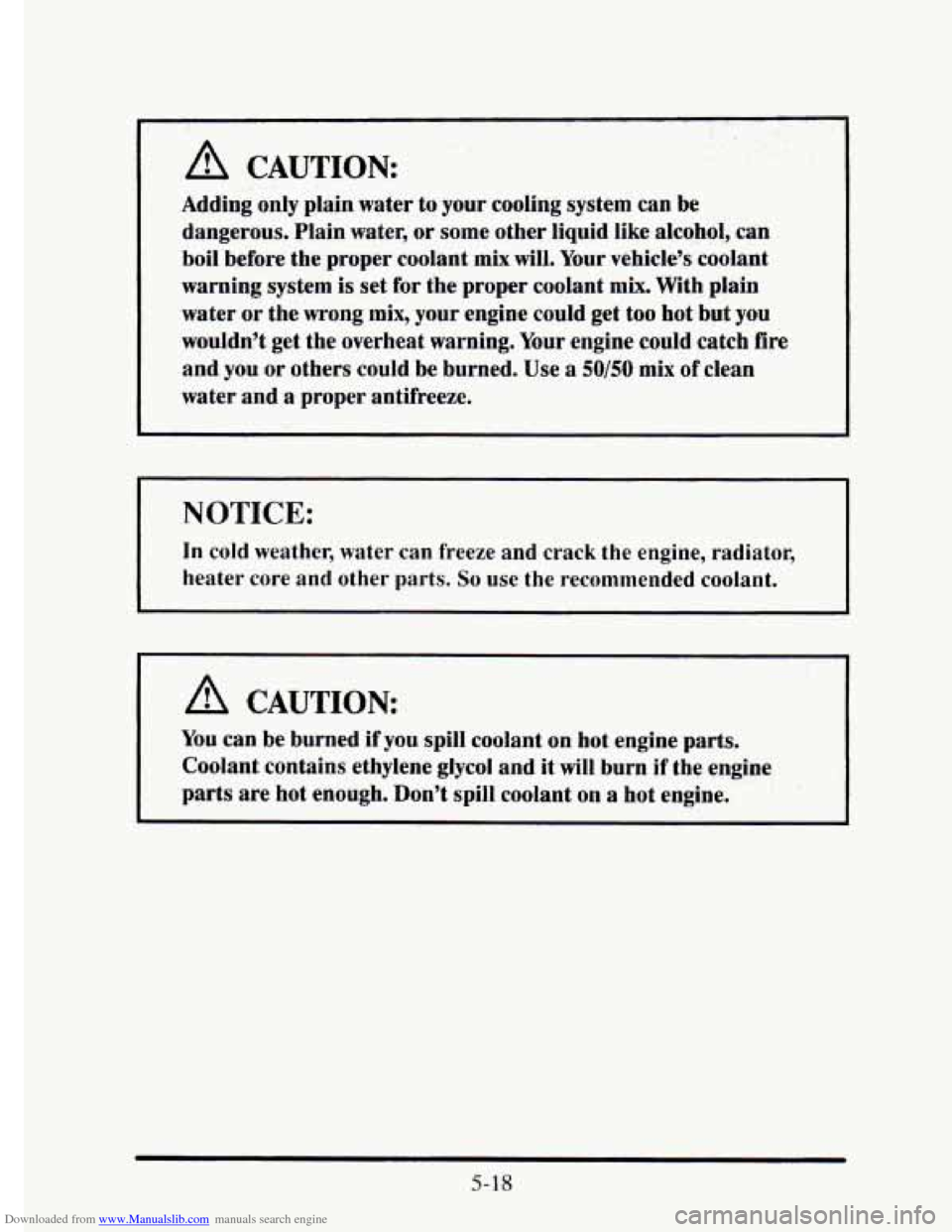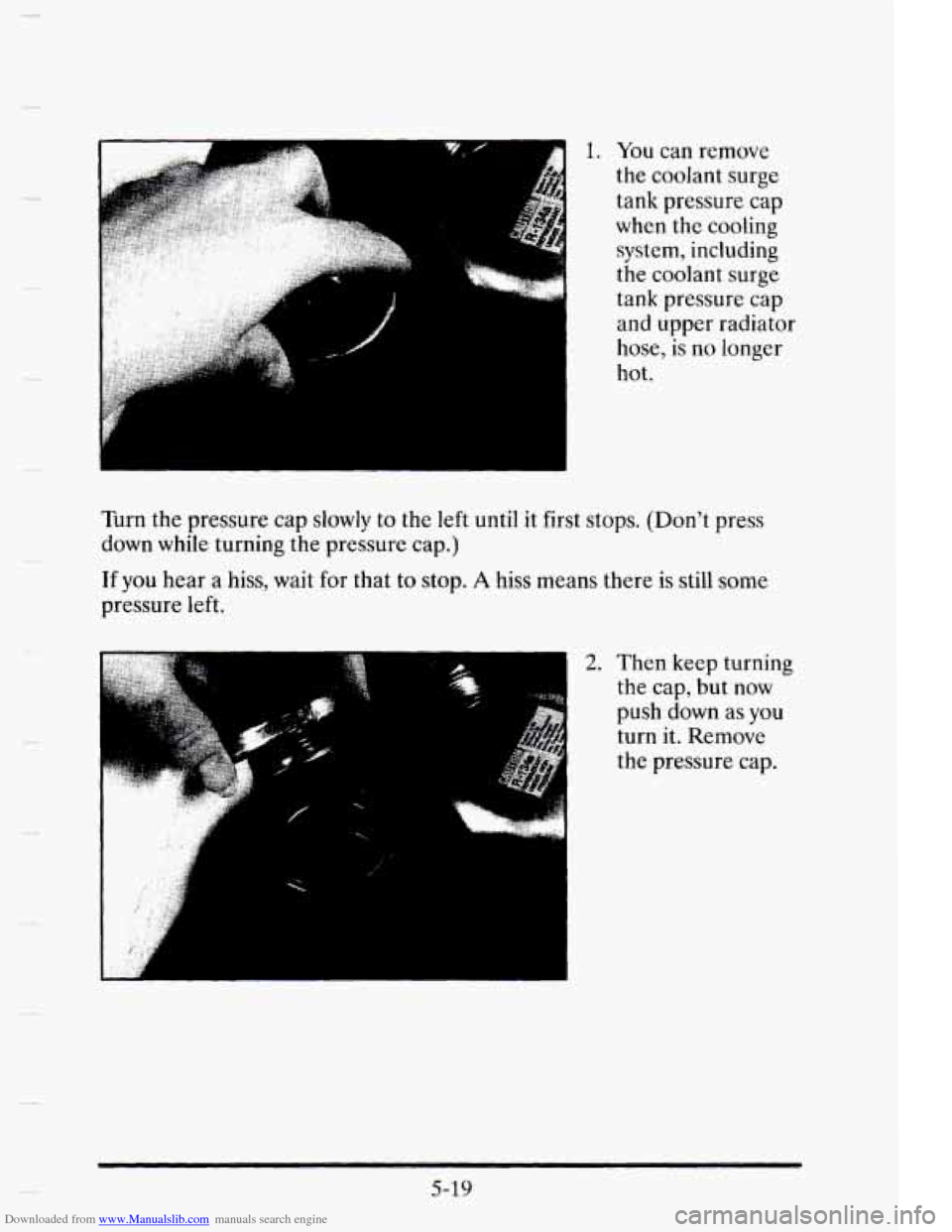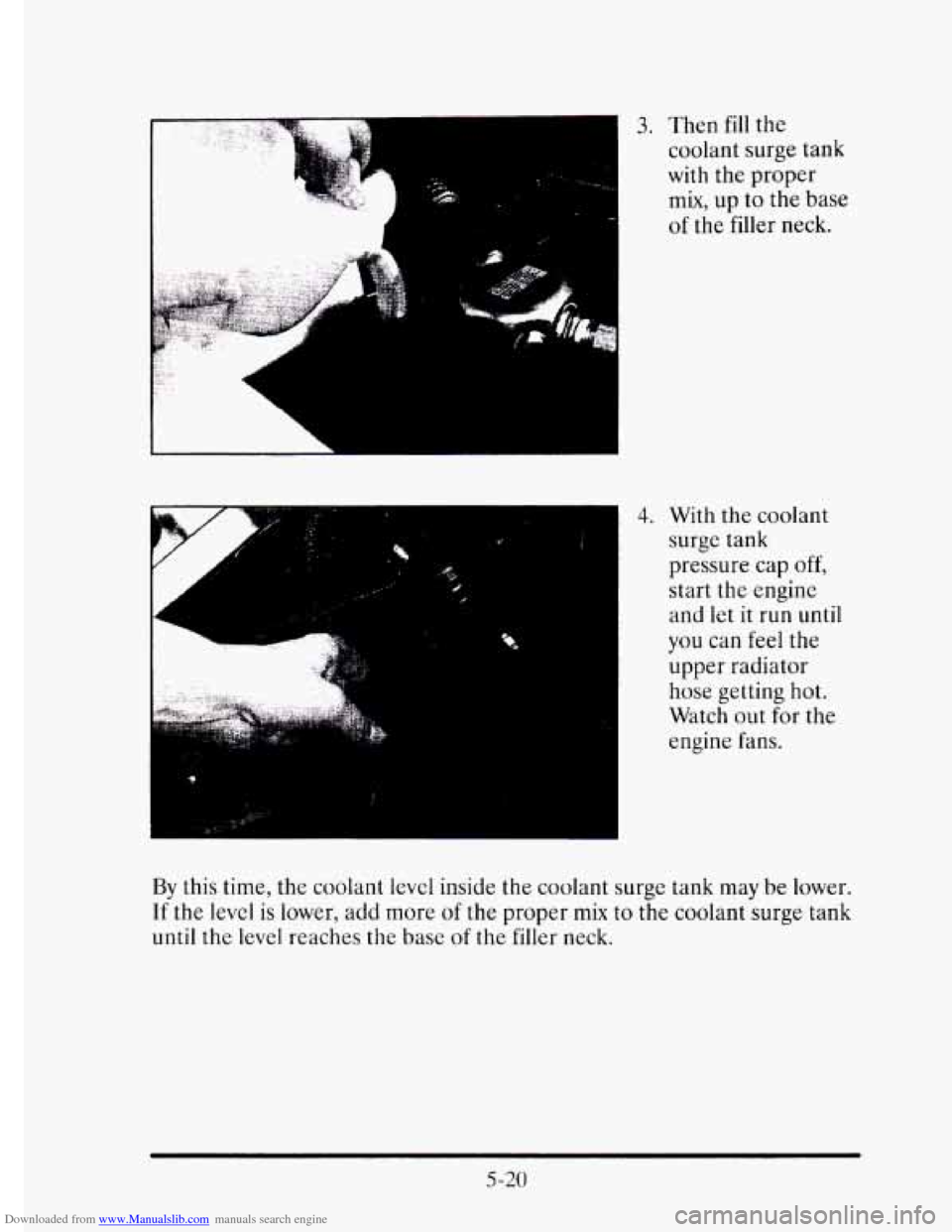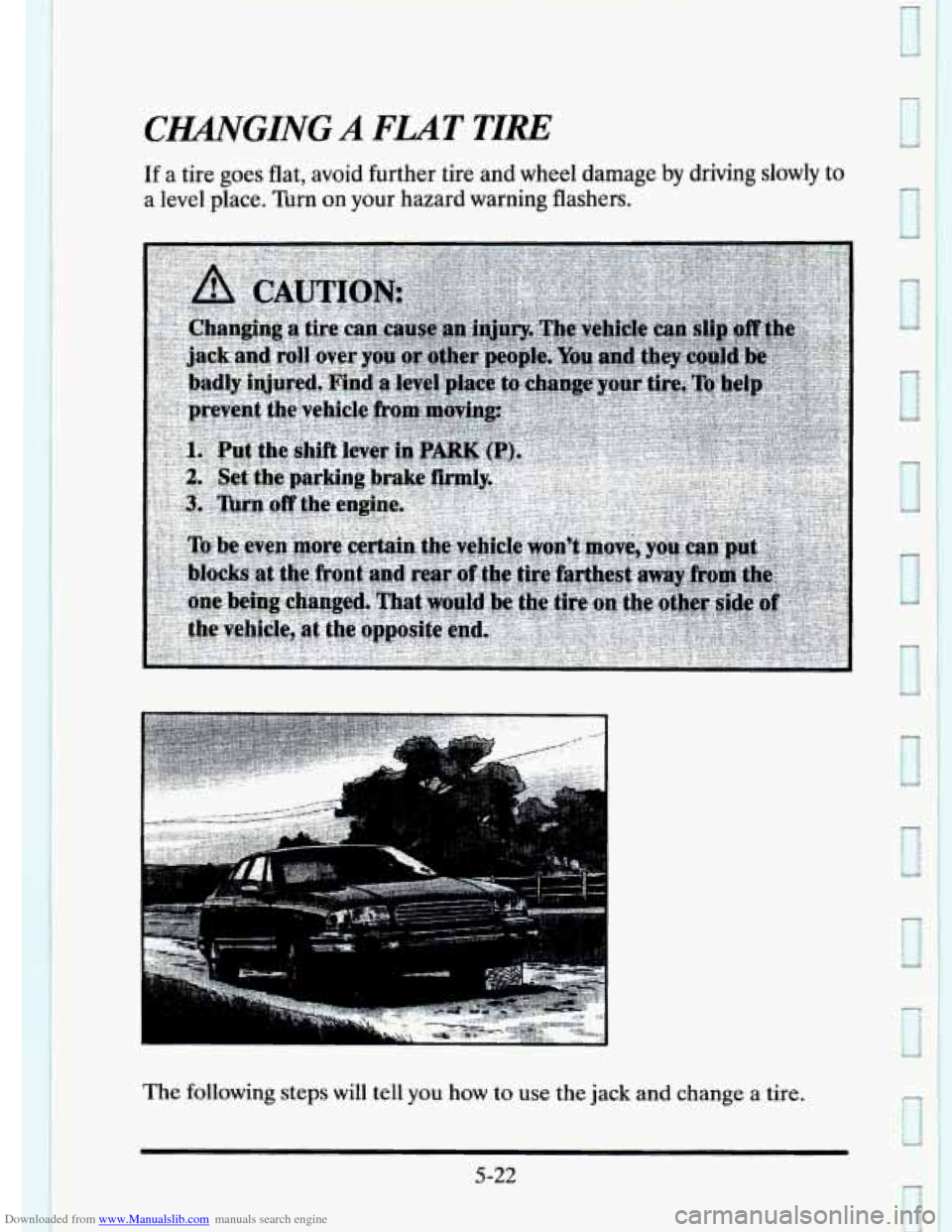CADILLAC ELDORADO 1995 10.G Owners Manual
ELDORADO 1995 10.G
CADILLAC
CADILLAC
https://www.carmanualsonline.info/img/23/7985/w960_7985-0.png
CADILLAC ELDORADO 1995 10.G Owners Manual
Trending: light, parking brake, water pump, maintenance schedule, clock reset, low beam, brake fluid
Page 241 of 395
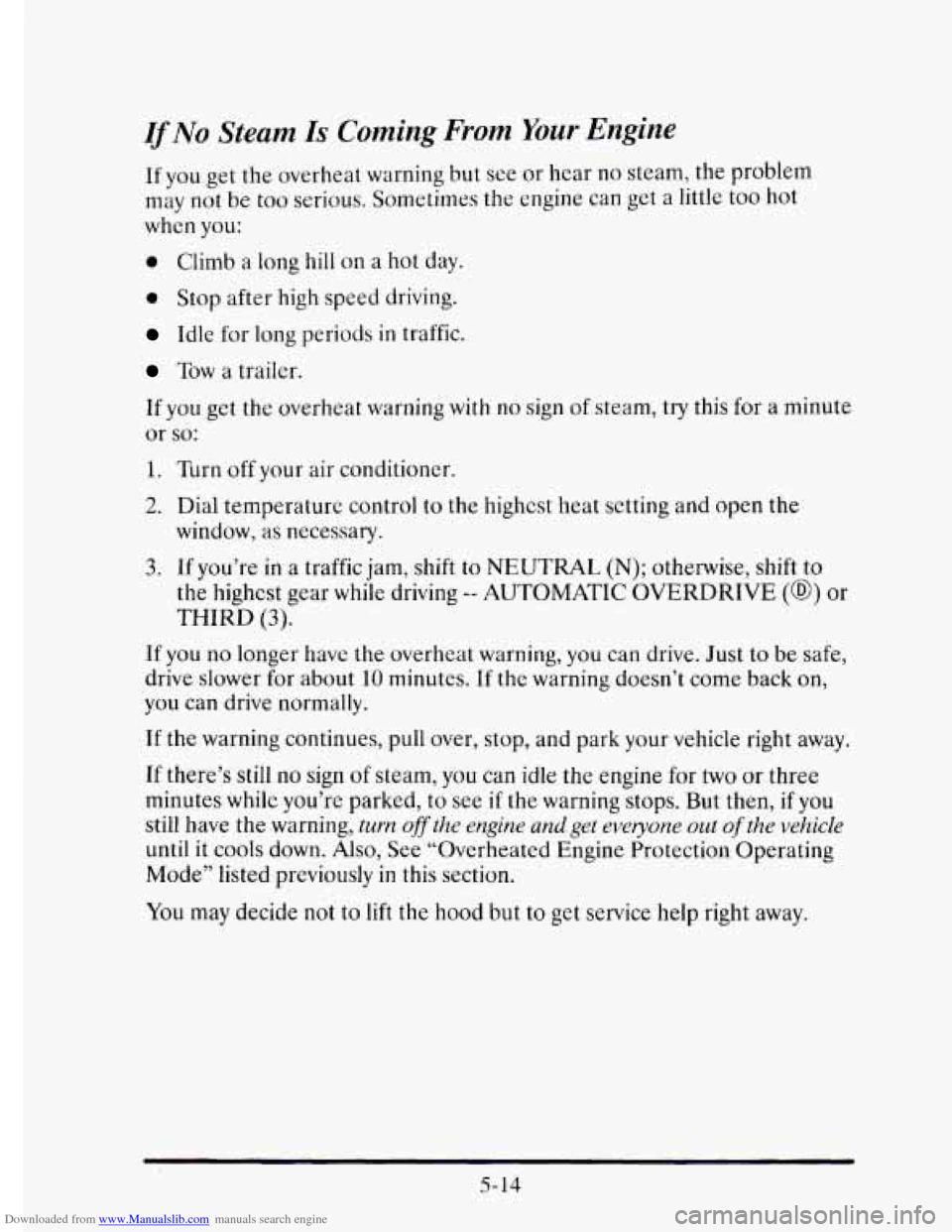
Downloaded from www.Manualslib.com manuals search engine If No Steam Is Coming From Your Engine
If you get the overheat warning but see or hear no steam, the problem
may not be
too serious. Sometimes the engine can get a little too hot
when you:
0 Climb a long hili on a hot day.
0 Stop after high speed driving.
Idle for long periods in traffic.
Tow a trailer.
If you get the overheat warning with no sign of steam,
try this for a minute
or
so:
1. Turn off your air conditioner.
2. Dial temperature control to the highest heat setting and open the
window,
as necessary.
3. If you’re in a traffic jam, shift to NEUTRAL (N); otherwise, shift to
the highest gear wh.ile driving
-- AUTOMATIC OVERDRIVE (@) or
THIRD (3).
If you no longer have the overheat warning, you can drive. Just to be safe,
drive slower for about
10 minutes. If the warning doesn’t come back on,
you
can drive normally.
If the warning continues,
pull over, stop, and park your vehicle right away.
If there’s
still no sign of steam, you can idle the engine for two or three
minutes while you’re parked,
to see if the warning stops. But then, if you
still have the warning, turn off the engine and get everyone out of the vehicle
until it cools down. Also, See “Overheated Engine Protection Operating
Mode’’ listed previously
in this section.
5-14
You may decide not to lift the hood but to get service help right away.
Page 242 of 395
Downloaded from www.Manualslib.com manuals search engine r
COOLING SYSTEM
When you decide it’s safe to lift the hood, here’s what you’ll see:
A. Coolant surge tank with pressure cap.
B. Electric engine fans.
5-15
Page 243 of 395
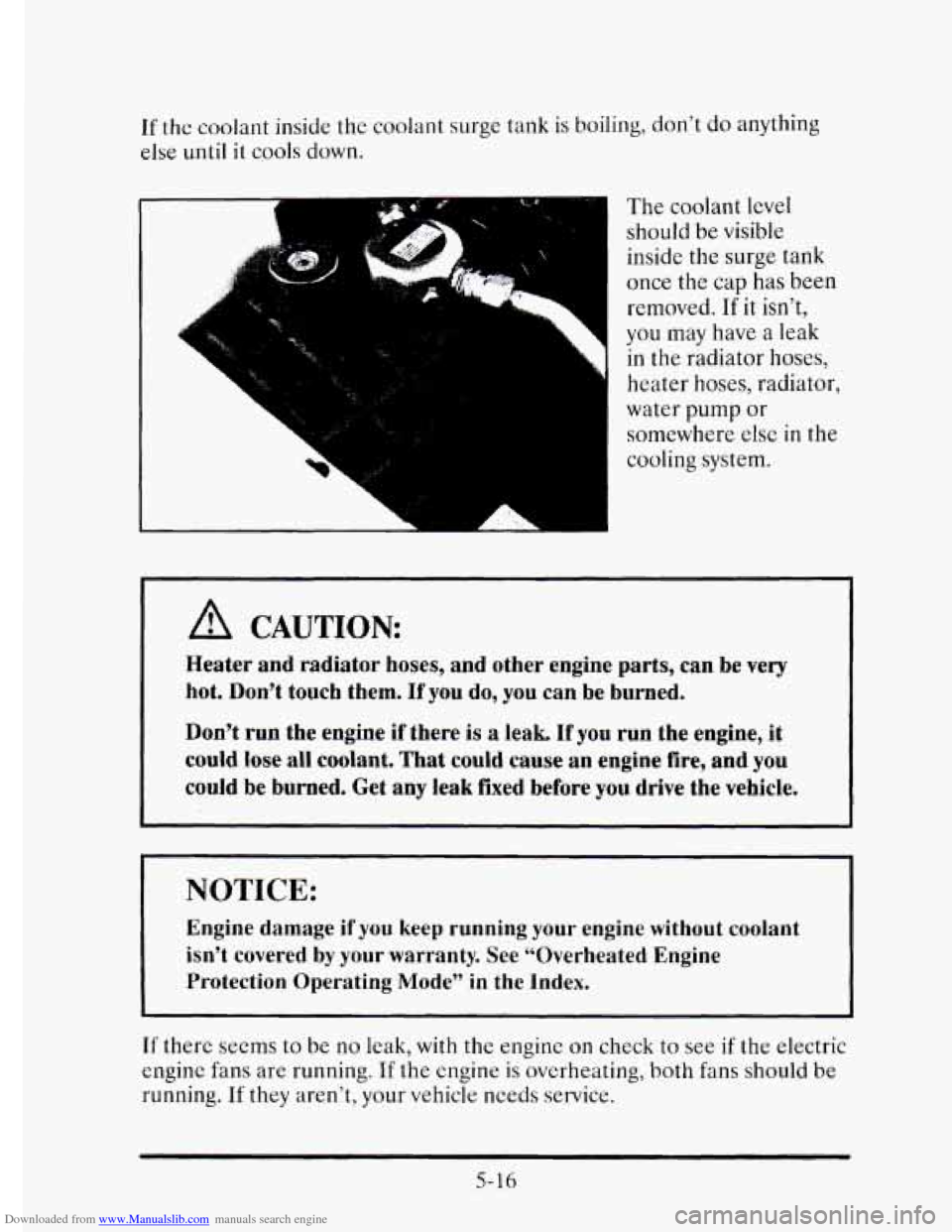
Downloaded from www.Manualslib.com manuals search engine If the coolant inside the coolant surge tank is boiling, don’t do anything
else until
it cools down.
A CAUTION
The coolant level
should be visible
inside
the surge tank
once the cap
has been
removed.
If it isn’t,
you may have a leak
in the radiator hoses,
heater
hoses, radiator,
water pump or
somewhere
else in the
cooling system.
Heater and radiator hoses, and other engine parts, can be very
hot. Don’t
touch them. If you do, you can be burned.
Don’t run the engine if there
is a leak. If you run the engine, it
could lose all coolant. That could cause an engine fire, and you
could be burned. Get any leak fixed before you drive the vehicle.
I NOTICE:
Engine damage if you keep running your engine without coolant
isn’t covered
by your warranty. See “Overheated Engine
Protection Operating Mode”
in the Index.
If there seems to be no leak, with the engine on check to see if the electric
engine fans are running.
If the engine is overheating, both fans should be
running. If they aren’t, your vehicle needs service.
5-16
Page 244 of 395
Downloaded from www.Manualslib.com manuals search engine
Page 245 of 395
Downloaded from www.Manualslib.com manuals search engine ..
A CAUTION:
Adding only plain water to your cooling system can be
dangerous. Plain water, or some other liquid like alcohol, can
boil before the proper coolant mix
will. Your vehicle’s coolant
warning system
is set for the proper coolant mix. With plain
water or the
wrong mix, your engine could get too hot but you
wouldn’t get the overheat warning. Your engine could catch
fire
and you or others could be burned. Use a 50/50 mix of clean
water and
a proper antifreeze.
NOTICE:
In cold weather, water can freeze and crack the engine, radiator,
heater core
and other parts. So use the recommended coolant.
You can be burned if you spill coolant on hot engine parts.
Coolant contains ethylene glycol and it will burn if the engine
parts
are hot enough. Don’t spill coolant on a hot engine.
5-18
Page 246 of 395
Downloaded from www.Manualslib.com manuals search engine 1. You can remove
the coolant surge
tank pressure cap
when the cooling
system, including
the coolant surge
tank pressure cap
and upper radiator
hose, is
no longer
hot.
Turn the pressure
cap slowly to the left until it first stops. (Don't press
down while turning
the pressure cap.)
If you hear a hiss, wait for that to stop. A hiss means there is still some
pressure left.
2. Then keep turning the cap, but now
push down
as you
turn it. Remove
the pressure cap.
5-19
Page 247 of 395
Downloaded from www.Manualslib.com manuals search engine P
.
I.'
A
-
4. With the coolant
surge tank
pressure cap off,
start the engine
and let it run until
you can feel the
upper radiator hose getting hot.
Watch out
for the
engine fans.
By this time, the coolant level inside the coolant surge tank may be lower.
If the level is lower, add more of the proper mix to the coolant surge tank
until the
ievel reaches the base of the filler neck.
5 -20
Page 248 of 395
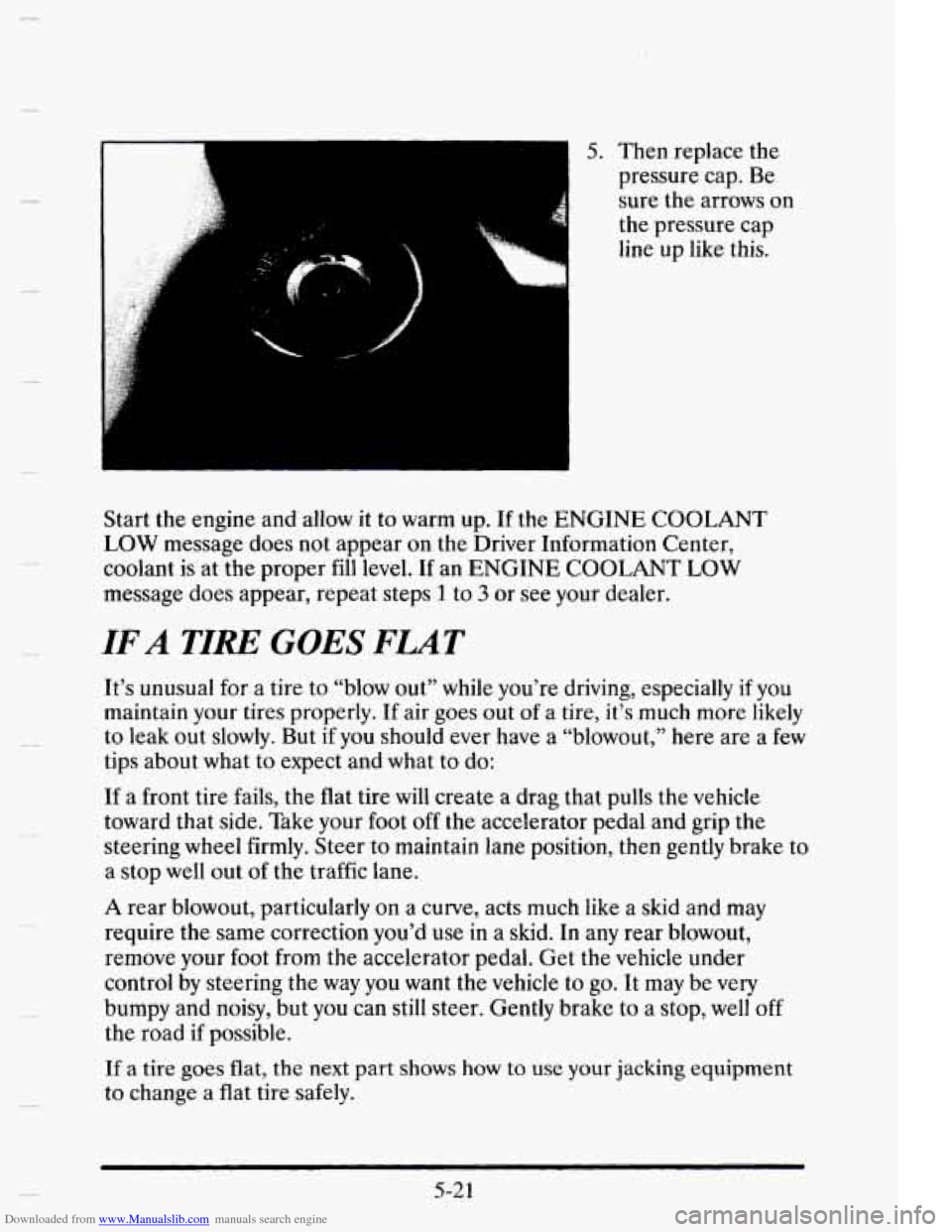
Downloaded from www.Manualslib.com manuals search engine .. i
k
5. Then replace the
pressure cap. Be
sure
the arrows on
the pressure cap
line up
like this.
Start the engine and allow
it to warm up. If the ENGINE COOLANT
LOW message does not appear on the Driver Information Center,
coolant
is at the proper fill level. If an ENGINE COOLANT LOW
message does appear, repeat steps 1 to 3 or see your dealer.
IF A TIRE GOES FLAT
It’s unusual for a tire to “blow out” while you’re driving, especially if you
maintain your tires properly.
If air goes out of a tire, it’s much more likely
to leak out slowly. But
if you should ever have a “blowout,” here are a few
tips about what to expect and what to do:
If a front tire fails, the flat tire will create a drag that pulls the vehicle
toward that side. Take your foot
off the accelerator pedal and grip the
steering
wheel firmly. Steer to maintain lane position, then gently brake to
a stop well out of
the traffic lane.
A rear blowout, particularly on a curve, acts much like a skid and may
require the same correction you’d use
in a skid. In any rear blowout,
remove your foot from the accelerator pedal. Get the vehicle under
control by steering
the way you want the vehicle to go. It may be very
bumpy and noisy, but you can still steer. Gently brake to a stop, well off
the road if possible.
If a tire goes flat, the next part shows how to use your jacking equipment
to change a flat tire safely.
5-2 1
Page 249 of 395
Downloaded from www.Manualslib.com manuals search engine CHANGING A FLAT TIRE
If a tire goes flat, avoid further tire and wheel damage by driving slowly to
a level place. Turn on your hazard warning flashers.
p.
The following steps will tell you how to use the jack and change a tire.
5-22
Page 250 of 395
Downloaded from www.Manualslib.com manuals search engine 1. The equipment
you'll need is in the
trunk under the
spare tire cover.
Rotate the plastic
wing
nut and
remove the cover.
2. Remove the wing
nut that secures the
jack and wheel wrench and remove
them
from the
trunk.
5-23
Trending: change time, battery location, power steering fluid, tire type, radiator cap, oil additives, CD changer

